#cour penal international
Text
TRIBUS BEREBERES CANARII
Nuestro gran Pablo de Lucas nos hace un repaso de donde venían nuestros antepasados canarios "Canarii" los descendientes de la isla de Canaria actual isla de Gran Canaria también llamada Tamaran "la tierra de los hombres valientes"
Pablo Deluca
Aparte del poblamiento, más numeroso y tardío, de Canarias llevado a cabo por el Imperio romano por medio de la “deportatio”, como castigo a las tribus bereberes “canarii” en las estribaciones del Alto Altas (Oued Guir), entre el s.I a.C. y el s.I. d.C., (A. Tejera, J.J. Jimenez et al., 1992), no debemos dejar de señalar otros posibles poblamientos anteriores a la Era. Algunos investigadores sostienen la hipótesis de que los feno-púnicos vendrían a explotar las pesquerías de túnidos y elaborar el “garum” en factorías establecidas en las islas, para cuyo abastecimiento traerían pastores y agricultores norteafricanos (R. González Antón et al., 1996). Otros autores señalan-en la misma línea-la posibilidad de un poblamiento de algunos otros grupos bereberes desde territorios de la Tamazgha continental controlados por Cartago (antigua Numidia, Tunisia y Libia, principalmente).
Los yacimientos de Buenavista (Lanzarote, s.X. a.C., J. Farrujia, 2019); Cueva de la Arena, Barranco Hondo (Tenerife, IV estrato, s.VI a.C., en 540 a.C, Pilar Acosta-M. Pellicer, 1971); Cueva de los Guanches (Icod, Tenerife, VII sepultura, 820 a.C., A. Mederos-G. Escribano, 2002); Cueva de la Palmera (La Palma, s.III a.C., P. Atoche, 1999), apuntan una cronología que abarca desde principios hasta finales del 1º milenio a.C., en el contexto de un poblamiento de tipo comercial, posiblemente llevado a cabo por los feno-púnicos en sus fases de precolonización y colonización. En el caso de la cerámica encontrada en Buenavista, esta pudo utilizarse para el transporte y almacenamiento de alimentos, lo que nos sugiere un contacto comercial frecuente con el Mediterráneo y el denominado “Círculo del Estrecho”.
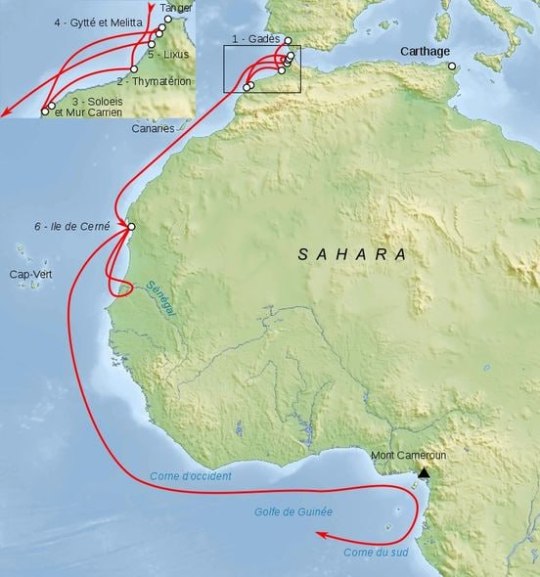



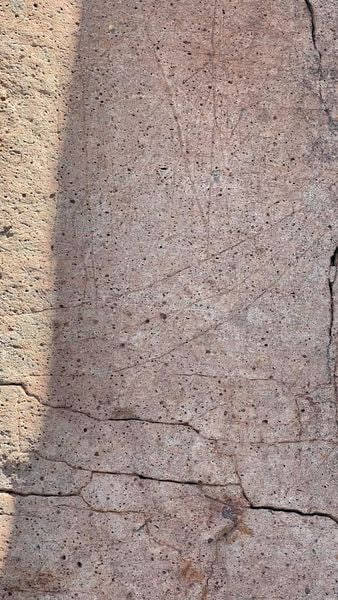

#pablo deluca#antropology#archeaology#amazigh#africa#afrique#aborigenous#indigenous#history#culture#genocide#nativos#united nations#international criminal court#cour penal international#corte penal internacional#antropologia#arqueología#aborigenes#indigenas#historia#cultura#genocidio#native#naciones unidas#canarias tiene identidad cultural propia#canarias la colonia mas antigua del mundo#descolonizacion de canarias#islas canarias#canarias
14 notes
·
View notes
Text
25805 basil court corona weather

#25805 BASIL COURT CORONA WEATHER PLUS#
single family home built in 2016 that was last sold on. Ideal live-in or investment opportunities in a fantastic location. See sales history and home details for 25805 Basil Ct, Corona, CA 92883, a 4 bed, 3 bath, 2,922 Sq. Easy access to M5 and M7 Motorways, Bus stop and more Double garage with auto door and sliding door to rear yard Ducted Air-conditioning and Gas fittings for heater & BBQ artist-will-be-registered-in-chandigarh-the-high-court-said-trucks-can-be. The Rent Zestimate for this home is 3,484/mo, which has decreased by 80/mo in the last 30 days. family-corona-news-updates-pakistani-cricketers-on-amitabh-127514866.html. The Zestimate for this house is 868,600, which has increased by 47,145 in the last 30 days. It contains 5 bedrooms and 3.5 bathrooms. Built-ins to all rooms and balconies to two bedrooms 25862 Basil Ct, Corona, CA is a single family home that contains 3,251 sq ft and was built in 2016. 25805 Thomson Learning 25806 Sonnet Technologies. single family home built in 1984 that was last sold on.
#25805 BASIL COURT CORONA WEATHER PLUS#
Main bedrooms with built-in or walk-in, en-suite plus enjoys balcony to both 24847 International Criminal Court - Cour Penale Internationale 24848 bollcons. See sales history and home details for 25805 Basil Ct, Moreno Valley, CA 92553, a 3 bed, 2 bath, 1,089 Sq. The Rent Zestimate for this home is 3,484/mo, which has decreased by 80/mo in the last 30 days. The Zestimate for this house is 894,900, which has increased by 7,100 in the last 30 days. cornstarch cornucopia Cornwall corolla corollary corona Coronado. Large multi-living room with high ceilings The location of this home, in a small boutique development, is a rare find!. Located in a quiet cul-de-sac, yet only a short stroll to Woolworths shopping, Cafes, Restaurants, Schools, Day care and more. 330 working 28636 331 major 28633 332 problem 28543 333 court 28369 334 full. Combining contemporary design with an abundance of superior finishes, this quality built brand new home embraces spacious open sunlit interiors, soft neutral tones and beautiful timber flooring.

0 notes
Text
❗️ STRAFANZEIGE AN DEN INTERNATIONALEN STRAFGERICHTSHOF WEGEN CORONA-SCHOCKMAßNAHMEN
👉 Aufruf zu Zeugenaussagen zu „Impfung“
▫️ Die Menschenrechtsverteidigerin (gemäß UN-Resolution 53/144) Sarah Luzia Hassel-Reusing bereitet eine Strafanzeige vor dem Internationalen Strafgerichtshof (IStGH) in Den Haag wegen Anwendung der Schockdoktrin unter dem Vorwand Corona vor. Die Anzeige bezieht sich auf Maßnahmen, die die Schwere eines Verbrechens gegen die Menschlichkeit erreicht haben (Art. 7 Römisches Statut). Zivilpersonen werden im Rahmen einer groß angelegten und systematischen Politik angegriffen durch die Straftaten:
- Mord (lit. a),
- Inhaftierung (Quarantäne) oder sonstige schwere Freiheitsentziehung unter Verletzung grundlegender Regeln des Völkerrechts (lit. e),
- Folter (lit. f),
- Verfolgung (lit. h) und
- andere unmenschliche Handlungen ähnlicher Art, die vorsätzlich großes Leid oder schwere Verletzungen des Körpers oder der geistigen oder körperlichen Gesundheit verursachen (lit. k).
▫️ Die Schockmaßnahmen dienen Macht-, Ideologie- und Profitinteressen verschiedener Kreise, die sich überschneiden.
Inzwischen hat die weltweite Corona-Kampagne unzählige Opfer der sogenannten „Impfung“ gefordert. 📌Diese „Impfung“ erfüllt die Eigenschaften einer biologischen Waffe.
▫️ Das Verbrechen gegen die Menschlichkeit muss untersucht und die Schuldigen zur Verantwortung gezogen werden. Dazu können Sie mit Ihrem Zeugnis beitragen. Die Geschädigten können durch die Strafanzeige Gesicht und Stimme bekommen und Leben anderer Menschen retten, inzwischen auch Kinderleben.
▫️ Wir benötigen Ihre Zeugenaussage. Aufgrund der Dringlichkeit wird um Zeugenaussagen zu schwersten bis tödliche Verläufe im zeitlichen Zusammenhang mit der „Impfung“ gebeten. Senden Sie bitte Ihren unterschriebenen Bericht unbedingt auch in englischer (britisch) Sprache als Einschreiben Einwurf zu.
Weitere Details finden Sie im Original-Aufruf.
🇬🇧Criminal complaint to the International Criminal Court about Corona shock measures - Call for testimony on "vaccination"
🇫🇷Dépôt d'une plainte pénale auprès de la Cour pénale internationale concernant les mesures de choc de Corona - Appel à témoignage sur la "vaccination"
🇪🇸Denuncia penal ante la Corte Penal Internacional por las medidas de choque de Corona - Llamada a declarar sobre la "vacunación"
🇮🇹Denuncia penale alla Corte Penale Internazionale per le misure shock di Corona - Invito a testimoniare sulla "vaccinazione"
🇵🇹Queixa penal ao Tribunal Penal Internacional para medidas de choque da coroa - pedido de testemunho sobre "vacinação"
🇳🇱Strafrechtelijke klacht bij het Internationaal Strafhof over de schokmaatregelen van Corona - Oproep tot het afleggen van getuigenis over "vaccinatie"
🇬🇷Ποινική καταγγελία στο Διεθνές Ποινικό Δικαστήριο για τα μέτρα σοκ της Κορόνα - Πρόσκληση για κατάθεση σχετικά με τον "εμβολιασμό"
🇮🇱תלונה פלילית לבית הדין הפלילי הבינלאומי על אמצעי הלם קורונה - קריאה לעדות על "חיסון"
0 notes
Text
The Bemba Surprise – Version 2.0
18 June 2018
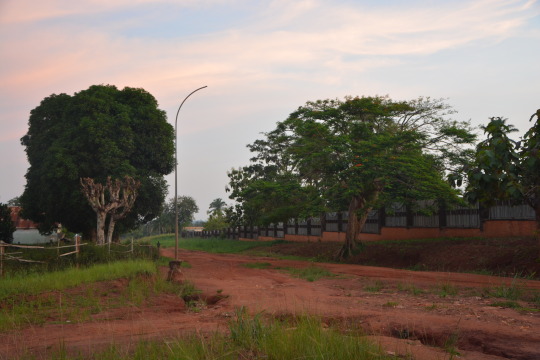
Bemba’s walled compound in the centre of Gemena (notice the street light pole) - August 2013
In a 2008 article entitled ‘Elections in the DRC, the Bemba Surprise’ Carayanis explains how almost out of the blue, Bemba challenged Kabila in the 2006 presidential elections, the first held in DR Congo since 1960. Because a majority of the votes was needed, Kabila and Bemba went to a runoff, won by Kabila with 58% (against 42% for Bemba). The elections were contested and resulted first in riots and later (March 2007) in deadly clashes between Bemba’s troops and Kabila’s republic guard (Carayannis 2008, 14). In April 2007, Bemba saw himself forced to leave the country, to never return, until today. Only a couple of months later the International Criminal Court (ICC) opened an investigation against him for war crimes committed during 2002-2003 in the Central African Republic (CAR). He was arrested in May 2008 in Brussels and sent to a prison at The Hague’s seaside.
There are three issues that always intrigued me regarding the arrest of Bemba:
(1)The first one touches upon the number of actors in the CAR conflict. Bemba was called in by Patassé, the incumbent president at the time, who, in turn, was never judged. Moreover, Bemba’s troops were certainly not the only militant troops; also Bozizé entered and conquered Bangui with the help of Chadian mercenaries and much terror, not to mention the presence of forces sent by Tripoli to assist Patassé.
(2) The second issue relates to the crimes committed by the MLC (Bemba’s rebel group) in DR Congo. While the crimes committed in CAR need to be accounted for, one must not forget that Bemba also led a ‘succesful’ rebel group inside his home country, and authored particular dark chapters in Eastern Congo, for which he was never charged.
(3) Third, a lot can be said about the timing of the arrest warrant and the arrest itself. Was it a way to impede Bemba to take part in the 2011 elections, when Kabila presented himself for a second mandate? Congolese analysts have referred to his arrestment as being ‘political rather than legal’ (Muambi 2018) and have deformed the ICC’s acronym in French CPI: Court Pénale Internationale into Court Politique Internationale– or in English: International Political Court (Mayizo 2018).

Painting representing the clashes between the Bemba troops and the presidential guard, followed by Bemba’s flight. By Congolese artist Sapin Makengele (2007).
In March 2016, Bemba was condemned for war crimes and crimes against humanity – people in CAR rejoiced and celebrated this decision. It sent a strong message against impunity, especially as the head of a rebel group had been judged. Bemba would challenge the court’s appeal, it was only a question of time and so June 8, 2018 arrived. Out of the blue, so it seemed, Bemba’s charges were dismissed. Grave errors had been found in the process, it was said, and a week later Bemba was, to the surprise of many, liberated: Bemba’s second surprise!
As I carried out research both in CAR and DR Congo, in particular the Sud-Ubangi’s province and the home town of Bemba, Gemena, I have followed his liberation, described by some as a ‘coup de théâtre’ (RFI 2018), and the discussion which it has brought about with great interest.
Across the CAR and Congo border, the Bemba release was received in opposing ways, like day and night. While Kinshasa and many of the Congolese communities in the Diaspora burst out in celebration, Bangui’s reaction was one of apprehension, disappointment and straight disbelief (Pabandji 2018; Kassai 2018). Without a doubt, many people in Congo see Bemba as their next president, the opposing figure who will oust Kabila by the ballot in the upcoming December 2018 elections. He is beloved because in comparison to Kabila he is a local, Bemba’s Congolité is not brought into question, he is a local.
However, within DRC not everyone is jubilating either. As a warlord Bemba committed grave crimes against his fellow countrymen (Pottier 2007) siding with Uganda forces and terrorizing the East in Ituri, what came to be called a ‘war within a war’. Likewise in Kinshasa, where there were deaths among his supporters, deaths that could have been avoided, and even in his Sud-Ubangi province, where even adored by many, some remember the specially violent fighting between Bemba and Kabila as the first time they were forced to flee their country.
In addition to the disregard, and almost insult, that the release of Bemba sends to the war crime victims in CAR, it also has implications for the newly established Court Pénale Spéciale (CPS) and the investigative work that Bensouda recently started in CAR. It is simply a symbolic blow. With Bemba released, after an eight-year long court case, what is the meaning of internationally-led justice? Can the CPS succeed at all? Can it even be viewed as legitimate in the eyes of the population?
There are a couple of important question we need to ask ourselves:
(1) The first one relates to the credibility and the legitimacy of the ICC. Many sceptics point to the fact that the ICC only brings Africans to court. Muambi even reads in it a ‘image of (modern) slavery’. African criminals should be prosecuted within the confines of the African continent. In 2016 an important and strong, and until now successful, precedent stood case. Chad’s former president, Habré, was prosecuted and convicted of crimes against humanity, war crimes, and torture by the Extraordinary African Chambers in the Senegalese court system. The trial provides model for international justice.
(2) The second question relates to the figure of the successful politico-military entrepreneurs in Central Africa, whose ‘fluid loyalities’, to use Debos’ elegant term (Debos 2008), allow them to switch smoothly between national armies, rebel groups, political parties, etc… Nobody words it better than one of my informants in Kinshasa, a principled and educated young man active in his community’s grassroots politics, but partly stuck with regards to his own aspirations: “It seems like in order to become a president in Central Africa, you have to be a rebel first”. What kind of message does such a release sends to the Central African youth in general? One of hope or despair?
I cannot say I am for or against Bemba’s release. It would be too simple. I am divided by the opinions of friends and informants on both sides of the border. However one thing is for sure, with only a couple of months to go to the long-awaited, and unconstitutionally postponed elections (at two reprisals) in Congo, on the one hand; and the ongoing impunity in CAR, not only with regards to rebel groups, but also to the peace keeping forces, as pointed out by Juan Branco (RFI 2018a), that impedes a settling of the conflict, the acquittal of Bemba seems to be, once again, politically more than legally informed.
Cited sources:
Carayannis, Tatiana. 2008. ‘Elections in the DRC: The Bemba Surprise’. 200. Special Report. Washington: United States Institute of Peace.
Debos, Marielle. 2008. ‘Fluid Loyalties in a Regional Crisis: Chadian “Ex-Liberators” in the Central African Republic’. African Affairs 107 (427): 225–41. https://doi.org/10.1093/afraf/adn004.
Kassai, Max-Landry. 2018. ‘L’acquittement de Bemba, une grande humiliation pour la nation centrafricaine.’ Le Chroniqueur Centrafricain. 14 June 2018. http://lechroniqeurcentrafricain.over-blog.com/2018/06/l-acquittement-de-bemba-une-grande-humiliation-pour-la-nation-centrafricaine.html.
Mayizo, Kerwin. 2018. Analyse Du Weekend Du 09/06/2018. https://www.youtube.com/watch?v=ZJJv2nmgLD0.
Muambi, Alphonse. 2018. Votre réaction sur la libération de Mr. Jean-Pierre Bemba Interview by Studio Guy. Facebook. https://www.facebook.com/alphonse.muambi/videos/1969819883051480/.
Pabandji, Pacôme. 2018. Coup de théâtre à la CPI. TV5 Monde. https://information.tv5monde.com/afrique/coup-de-theatre-la-cpi-le-congolais-jean-pierre-bemba-acquitte-242460.
Pottier, Johan. 2007. ‘Rights Violations, Rumour, and Rhetoric: Making Sense of Cannibalism in Mambasa, Ituri(Democratic Republic of Congo)’. The Journal of the Royal Anthropological Institute 13 (4): 825–43.
RFI. 2018a. ‘RCA: l’avocat français Juan Branco évincé de la Cour pénale spéciale et expulsé’. RFI Afrique, 30 May 2018. http://www.rfi.fr/afrique/20180530-rca-avocat-francais-juan-branco-cour-penale-speciale-expulse.
———. 2018b. ‘CPI: Jean-Pierre Bemba acquitté en appel - RFI’. RFI Afrique. 6 August 2018. http://www.rfi.fr/afrique/20180608-cpi-jean-pierre-bemba-acquitte-appel.
#central african republic#DRC#Congo#Kinshasa#Bangui#ICC#CPI#Jean-Pierre Bemba#international justice#Habré#neo-colonialism#open ed
1 note
·
View note
Text
🇫🇷🕊🌍« Les mises en cause du gouvernement pour sa gestion de la pandémie du Covid-19 affluent devant la Cour de Justice de la République.🌍🕊🇫🇷
(Lien menant à l'article :
https://www.liberation.fr/france/2020/03/29/le-gouvernement-face-a-une-epidemie-de-plaintes-au-penal_1783476)
Ce n’était pas le plus connu du code pénal, mais il est en passe de le devenir : l’article 223-7, passible de deux ans de prison et 75 000 euros d’amende. Il vise «quiconque s’abstient volontairement de prendre des mesures permettant de combattre un sinistre de nature à créer un danger pour les personnes». Il est plus facile à dénoncer que la classique «non-assistance à personne en danger» et convient parfaitement à quiconque entend porter plainte devant la Cour de Justice de la République, seule instance apte à juger les ministres pour des faits commis dans l’exercice de leurs fonctions, afin de contester pénalement la gestion gouvernementale de la pandémie. »
‼❎ L'article 223-7 prévoit : « Quiconque s'abstient volontairement de prendre ou de provoquer les mesures permettant, sans risque pour lui ou pour les tiers, de combattre un sinistre de nature à créer un danger pour la sécurité des personnes est puni de deux ans d'emprisonnement et de 30 000 euros d'amende. » =======>>> ❎‼ Donc pas 75 000 € MAIS 30 000 € !!! (Bravo à Libération pour la fake news !)
‼❎ Si on cherche un peu (pas beaucoup), on constate qu'on peut AUSSI rajouter cet article :
« Article 223-6
Modifié par Ordonnance n°2000-916 du 19 septembre 2000 - art. 3 (V) JORF 22 septembre 2000 en vigueur le 1er janvier 2002
Quiconque pouvant empêcher par son action immédiate, sans risque pour lui ou pour les tiers, soit un crime, soit un délit contre l'intégrité corporelle de la personne s'abstient volontairement de le faire est puni de cinq ans d'emprisonnement et de 75 000 euros d'amende.
Sera puni des mêmes peines quiconque s'abstient volontairement de porter à une personne en péril l'assistance que, sans risque pour lui ou pour les tiers, il pouvait lui prêter soit par son action personnelle, soit en provoquant un secours. »
Source : https://www.legifrance.gouv.fr/affichCode.do?idSectionTA=LEGISCTA000006165289&cidTexte=LEGITEXT000006070719&dateTexte=20020101
‼❎ Et je suis sûre qu'en cherchant UN PEU PLUS, on peut trouver des articles permettant de leur faire prendre plus cher !
‼❎On peut poursuivre MACRON en plus des autres pour crimes contre l'Humanité devant la Cour Pénale Internationale en vertu de l'article 7 du Statut de Rome et demander la destitution en vertu des articles 53-2 et 68 de la Constitution car les crimes contre l'Humanité sont des motifs de destitution.
‼❎ Le b) est d'ailleurs intéressant :
« b) Par « extermination », on entend notamment le fait d’imposer intentionnellement des conditions de vie, telles que la privation d’accès à la nourriture et aux médicaments, calculées pour entraîner la destruction d’une partie de la population ; »
______________
Comment exercer devant la Cour pénale internationale ?
Les dossiers de candidature doivent être adressés au
Greffe de la Cour pénale internationale,
Direction des Services non administratifs sous la responsabilité du Greffier,
BP 19519,
2500 CM La Haye (Pays-Bas).
En règle générale , le Bureau du Procureur reçoit toute information pertinente pouvant être considérée comme une preuve relative à des crimes relevant de la compétence de la CPI à l' adresse suivante : [email protected] , à tout moment.
_________________
Pour vous renseigner sur le formulaire applicable à une procédure spécifique, veuillez contacter la Section de la participation des victimes et des réparations de la CPI.
Section de la participation des victimes et des réparations
Cour pénale internationale :
Po Box 19519
2500 CM, La Haye
Pays-Bas
Adresse électronique: [email protected]
Numéro de téléphone du contact: +31 (0) 70 515 95 55
LE SITE DE LA CPI est ici : https://www.icc-cpi.int/
___________
Article 7 du STATUT DE ROME
Crimes contre l’humanité
1. Aux fins du présent Statut, on entend par crime contre l’humanité l’un quelconque des actes ci-après lorsqu’il est commis dans le cadre d’une attaque généralisée ou
systématique lancée contre toute population civile et en connaissance de cette attaque :
a) Meurtre ;
b) Extermination ;
c) Réduction en esclavage ;
d) Déportation ou transfert forcé de population ;
e) Emprisonnement ou autre forme de privation grave de liberté physique en
violation des dispositions fondamentales du droit international ;
f) Torture ;
g) Viol, esclavage sexuel, prostitution forcée, grossesse forcée, stérilisation forcée ou toute autre forme de violence sexuelle de gravité comparable ;
h) Persécution de tout groupe ou de toute collectivité identifiable pour des motifs d’ordre politique, racial, national, ethnique, culturel, religieux ou sexiste au sens du paragraphe 3, ou en fonction d’autres critères universellement reconnus comme inadmissibles en droit international, en corrélation avec tout acte visé dans le présent paragraphe ou tout crime
relevant de la compétence de la Cour ;
i) Disparitions forcées de personnes ;
j) Crime d’apartheid ;
k) Autres actes inhumains de caractère analogue causant intentionnellement de grandes souffrances ou des atteintes graves à l’intégrité physique ou à la santé physique ou mentale.
2. Aux fins du paragraphe 1 :
a) Par « attaque lancée contre une population civile », on entend le comportement qui consiste en la commission multiple d’actes visés au paragraphe 1 à l’encontre d’une population civile quelconque, en application ou dans la poursuite de la politique d’un État ou d’une organisation ayant pour but une telle attaque ;
b) Par « extermination », on entend notamment le fait d’imposer intentionnellement des conditions de vie, telles que la privation d’accès à la nourriture et aux médicaments, calculées pour entraîner la destruction d’une partie de la population ;
c) Par « réduction en esclavage », on entend le fait d’exercer sur une personne l’un quelconque ou l’ensemble des pouvoirs liés au droit de propriété, y compris dans le cadre de la traite des être humains, en particulier des femmes et des enfants ;
d) Par « déportation ou transfert forcé de population », on entend le fait de déplacer de force des personnes, en les expulsant ou par d’autres moyens coercitifs, de la région où elles se trouvent légalement, sans motifs admis
en droit international ;
e) Par « torture », on entend le fait d’infliger intentionnellement une douleur ou des souffrances aiguës, physiques ou mentales, à une personne se trouvant sous sa garde ou sous son contrôle ; l’acception de ce terme ne s’étend pas à la douleur ou aux souffrances résultant uniquement de sanctions légales, inhérentes à ces sanctions ou occasionnées par elles ;
f) Par « grossesse forcée », on entend la détention illégale d’une femme mise enceinte de force, dans l’intention de modifier la composition ethnique d’une population ou de commettre d’autres violations graves du droit international. Cette définition ne peut en aucune manière s’interpréter comme ayant une incidence sur les lois nationales relatives à la grossesse ;
g) Par « persécution », on entend le déni intentionnel et grave de droits fondamentaux en violation du droit international, pour des motifs liés à l’identité du groupe ou de la collectivité qui en fait l’objet ;
h) Par « crime d’apartheid », on entend des actes inhumains analogues à ceux que vise le paragraphe 1, commis dans le cadre d’un régime institutionnalisé d’oppression systématique et de domination d’un groupe racial sur tout autre groupe racial ou tous autres groupes raciaux et dans l’intention de maintenir ce régime ;
i) Par « disparitions forcées de personnes », on entend les cas où des personnes sont arrêtées, détenues ou enlevées par un État ou une organisation politique ou avec l’autorisation, l’appui ou l’assentiment de cet État ou de cette organisation, qui refuse ensuite d’admettre que ces personnes sont privées de liberté ou de révéler le sort qui leur est réservé ou l’endroit où elles se trouvent, dans l’intention de les soustraire à la protection de la loi pendant une période prolongée.
3. Aux fins du présent Statut, le terme « sexe » s’entend de l’un et l’autre sexes, masculin et féminin, suivant le contexte de la société. Il n’implique aucun autre sens.
SOURCE : STATUT DE ROME DE LA COUR PÉNALE INTERNATIONALE consultable ici : http://www.cfcpi.fr/IMG/pdf_Statut_de_Rome_de_la_Cour_penale_internationale.pdf
_______________
Lire aussi cet article dans lequel il est clairement dit ceci : "Ainsi, le Président « n’est pas responsable des actes accomplis en cette qualité » (art. 67). Cette irresponsabilité est absolue et permanente : elle est valable à la fois dans les domaines politique, pénal, civil et administratif, et aucune action ne peut être engagée contre le chef de l’État pour des actes accomplis en qualité de Président, même après la fin de son mandat.
Cette irresponsabilité connaît cependant deux exceptions : le chef de l’État peut être poursuivi devant la Cour pénale internationale pour crimes contre l’humanité, ou soumis à une procédure de destitution « en cas de manquement à ses devoirs manifestement incompatible avec l’exercice de son mandat » (art. 68).
https://www.vie-publique.fr/fiches/19423-president-de-la-republique-responsabilite-penale-civile-administrative
Le site du conseil constitutionnel confirme ici : https://www.conseil-constitutionnel.fr/la-constitution/le-president-est-il-responsable
Autre source : http://www.vie-publique.fr/decouverte-institutions/institutions/fonctionnement/president-republique/role/qu-est-il-responsabilite-penale-civile-administrative-du-president-republique.html
___________________
Article 67
Modifié par Loi constitutionnelle n°2007-238 du 23 février ... - art. unique
Le Président de la République n'est pas responsable des actes accomplis en cette qualité, sous réserve des dispositions des articles 53-2 et 68.
Il ne peut, durant son mandat et devant aucune juridiction ou autorité administrative française, être requis de témoigner non plus que faire l'objet d'une action, d'un acte d'information, d'instruction ou de poursuite. Tout délai de prescription ou de forclusion est suspendu.
Les instances et procédures auxquelles il est ainsi fait obstacle peuvent être reprises ou engagées contre lui à l'expiration d'un délai d'un mois suivant la cessation des fonctions.
SOURCE : https://www.legifrance.gouv.fr/affichTexteArticle.do;?idArticle=LEGIARTI000006527561&cidTexte=LEGITEXT000006071194
________________________
Article 68
Modifié par Loi constitutionnelle n°2007-238 du 23 février ... - art. unique
Le Président de la République ne peut être destitué qu'en cas de manquement à ses devoirs manifestement incompatible avec l'exercice de son mandat. La destitution est prononcée par le Parlement constitué en Haute Cour.
La proposition de réunion de la Haute Cour adoptée par une des assemblées du Parlement est aussitôt transmise à l'autre qui se prononce dans les quinze jours.
La Haute Cour est présidée par le président de l'Assemblée nationale. Elle statue dans un délai d'un mois, à bulletins secrets, sur la destitution. Sa décision est d'effet immédiat.
Les décisions prises en application du présent article le sont à la majorité des deux tiers des membres composant l'assemblée concernée ou la Haute Cour. Toute délégation de vote est interdite. Seuls sont recensés les votes favorables à la proposition de réunion de la Haute Cour ou à la destitution.
Une loi organique fixe les conditions d'application du présent article.
___________________
Article 53-2
Créé par Loi constitutionnelle n°99-568 du 8 juillet 1999 - art. unique
La République peut reconnaître la juridiction de la Cour pénale internationale dans les conditions prévues par le traité signé le 18 juillet 1998.
https://www.legifrance.gouv.fr/affichTexteArticle.do?cidTexte=JORFTEXT000000571356&idArticle=LEGIARTI000006527536&dateTexte=&categorieLien=cid
_________________
LISTE DES AVOCATS DE LA CPI : https://www.icc-cpi.int/get-involved/Pages/legal-professionals.aspx
LISTE DES ASSISTANTS DES CONSEILS : https://www.icc-cpi.int/about/registry/pages/list-of-assistants.aspx
#CJR Rien ni personne n'est supérieur à la vérité #OMS #Politique #Assemblée #Economies #COVID19 #Chloroquine #Suisse
« LE VERBE EST PLUS FORT QUE LA RÉPRESSION » #Humanité #République
#GiletsJaunes #France #FREXIT #CGT #FO #CFECGC #CFTC #CGTFO 🇫🇷🔵⚪️🔴 #Justice #Constitution #Démocratie
#ForMiSC #CEMAT #CEMM #CEMAA #OIA #BSPP #Société #Institutions #ONU #LDH #UPEACE #UNESCO #UNICEF #CPI
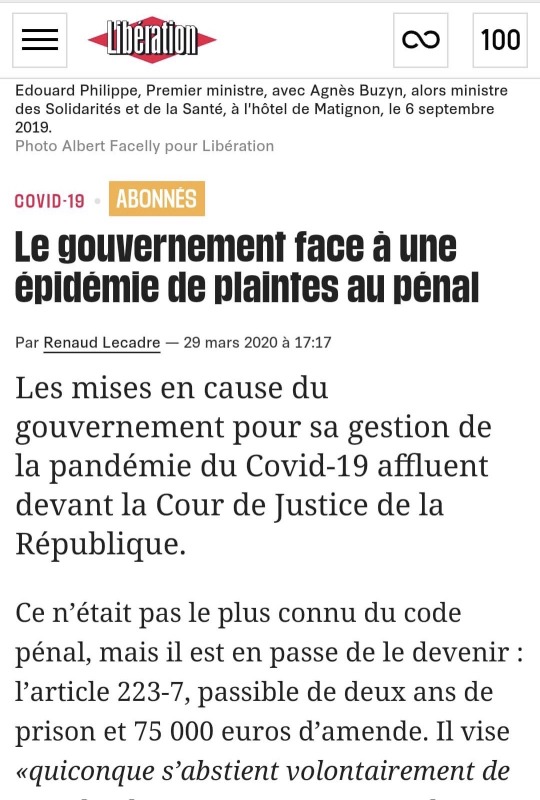
0 notes
Text
Lexique
Le Manifeste des 343: (ou manifeste des 343 salopes) a été publié en 1971 par le Nouvel Observateur. Il s'agit d'une pétition que 343 femmes, anonymes et célèbres, ont signée afin de faire évoluer la loi en matière d'avortement.
Genre : Terme utilisé en sciences sociales pour étudier la façon dont la société construit les différents rôles des hommes et des femmes. Le terme de sexe ne renvoie qu'à une distinction biologique entre hommes et femmes tandis que le terme de genre renvoie à une distinction sociale.
Féminisme : Ensemble de mouvements et d'idées politiques, philosophiques et sociales, qui partagent un but commun : définir, établir et atteindre l'égalité politique, économique, culturelle, personnelle, sociale et juridique entre les femmes et les hommes.
Masculinisme : Ensemble d’idées, de revendications qui cherchent à promouvoir les droits des hommes et leurs intérêts dans la société civile. Il défend la position dominante des hommes dans la société et les privilèges associés en se basant sur les différences culturelles et biologique entre les hommes et les femmes
Sextremiste : Utilisation extrême du corps de la femme et de son image dans le but de faire avancer le combat des féministes.
Mouvement contestataire : Ensemble de personnes unies par des idées similaires, protestant contre l'ordre établi, contre la société sur une durée déterminé
Mouvement social : Forme d’action collective qui s’inscrit dans la durée, destinée à réclamer ou à s'opposer à des changements sociaux de grande ampleur (changement radical dans la société) et tournée vers la protestation envers un adversaire désigné.
Déviance : Fait d’adopter un comportement qui n’est pas conforme à une norme. synonyme: insurrection, désobéissance civile.
Patriarcat : Système social dans lequel l’Homme, en tant que père, est dépositaire de l’autorité au sein de la famille ou au sein du clan. La perpétuation de cette autorité est fondée sur la descendance masculiniste et de la discrimination sexuelle. Les femmes sont subordonnées à l’homme qui possède l’autorité : le père, le mari ou le frère.
Traditionalisme : Attachement aux croyances, aux coutumes, aux valeurs et aux idées transmises par la tradition. Convaincus que la société doit conserver à tout prix ses formes politiques, morales et religieuses et cherchent à perpétuer
Contestation sociale : Débat ou différend sur une question contestable. Action de remettre en cause l'ordre social, politique, économique établi et de critiquer systématiquement les institutions existantes et l'idéologie dominante.
Sphère privée : Espace contenant tout ce qui relève du fonctionnement personnel qui n’est pas susceptibles d’être exposé au regard des autres. Il englobe l’intime, le foyer, la famille, le groupe d’ami, les problèmes de sexualité, de sante, d’argent, etc.
Sphère publique : Espace contenant tous les lieux où nous sommes en représentation (c’est-à-dire exposés au regard des autres comme les rues, les cafés, les relations professionnelles, etc.
Saint Simonisme : Système socialiste né en 1830 par Claude-Henri de Rouvroy, comte de Saint-Simon qui veut à la fois une morale, une politique et une religion . Il se présente comme un Nouveau Christianisme : il faut accroître le bonheur social du pauvre, prôner la justice social et l’industrialisation.
Commune de Paris : Période insurrectionnelle de l'histoire de Paris qui débuta le 18 mars 1871 jusqu’à la « semaine sanglante » » du 21 au 28 mai 1871. Cette insurrection contre le Gouvernement, issu de l’Assemblée Nationale qui venait d'être élue au suffrage universel, ébaucha pour la ville une organisation ouvrière proche de l’autogestion. Elle est en partie une réaction à la défaite française de la guerre franco-prussienne de 1870 et à la capitulation de Paris.
Révolution industrielle : Processus de changement rapide de l'industrie qui a modifié en profondeur l'agriculture, l'économie et la société. Cette "révolution" apparaît en Angleterre à la fin du XVIIIe siècle avant de s'étendre au cours du XIXe siècle au continent européen et aux Etats-Unis.
Monarchie de juillet : (de juillet 1830 à février 1848) Régime politique français C'est une monarchie constitutionnelle avec pour roi Louis-Philippe Ier. Le régime politique repose sur le suffrage censitaire qui donne le pouvoir à la petite partie la plus riche de la bourgeoisie française
Suffragettes : Militantes de Grande-Bretagne qui réclamaient pour les femmes le droit de voter. Né au XXIÈME siècle, leur mouvement prit une forme militante sous l'impulsion de Mrs. Pankhurst. La loi de juillet 1928 accorda sans restriction le droit de vote aux femmes.
Mouvement suffragiste : Celui-ci commence en 1866 avec le dépôt au Parlement d'une pétition pour le droit de vote des femmes. Son rejet suscite une réaction de l'opinion qui aboutit à la formation, en décembre 1867, du premier mouvement suffragiste, la National Society for Women's Suffrage. Action. Après l'échec de justesse du Suffrage Bill de 1897, leurs mouvements s'unissent dans la National Union of Women Suffrage Societies de Millicent Fawcett. Ne croyant plus aux manifestations pacifiques, Emmeline Pankhurst fonde en 1903 la très radicale Women's Social and Political Union. Sous son impulsion, celles qui seront bientôt appelées les suffragettes par la presse s'orientent vers des actions spectaculaires et violentes entre 1906 et 1914.
Printemps des peuples européens (ou Printemps des révolutions) Désigne un ensemble de révolutions dans toutes l’Europe qui éclata le 22 février 1848 à Paris par un révolution qui renversa en quelques jours la monarchie constitutionnelle de Louis-Philippe 1er.
Guerre de sécession :( guerre civile américaine) Guerre qui a eu lieu ente 1861 et 1865 et opposa les États-Unis d'Amérique et ses Etats confédérés d’ Amérique.
Première international : L'Association internationale des travailleurs (AIT) est le nom officiel de la Première Internationale, fondée le 28 septembre 1864 à Londres au Saint-Martin's Hall elle a pour objectif premier de coordonner le développement du mouvement ouvrier.
Révolution mexicaine : Insurrection armée, sociale et culturelle dirigé par des anarchistes, nationalistes et socialistes qui commença au Mexique en 1910 en réaction à la dictature du général Porfirio Díaz jusqu’à la fin des années 1920.
Guerre civile d’Espagne : (du 18 juillet 1936 au 1er avril 1939) Conflit espagnol opposant d'une part le camp des républicains et de l’autre les nationalistes.
Black feminism : (en français le « féminisme noir » est un mouvement féministe né aux États-Unis dans les années 1960-1970, lors du mouvement des droits civiques. Il se caractérise par la volonté d'associer ensemble les critiques du sexisme et du racisme.
Combahee River Collective : Organisation féministe lesbienne radicale, active de 1974 à 1980 à Boston. Elle est notamment connue pour sa « Déclaration du Combahee River Collective » (1977), un des textes clés du Black feminism.
Bibliographie
Articles de magazine :
ROUDIERE, Liliane. "Pourquoi "féminisme" est-il un gros mot ?". Causette, n° 54, mars 2015.
MARTEAU, Stéphanie . "Le féminisme à l'épreuve du sextrémisme". M, le magazine du monde, n° 77, 9 mars 2013. p. 43-45
PLAGNET, Juliette. "La nuit debout". Causette, n° 67, mai 2016. p. 39-41
BOURGET, Albertine. "Victoria Woodhul,1ère candidate à la maison blanche ".Causette,n° 67, mai 2016. p. 76-77
FOURNIER, Martine. "L'ère du post-féminisme ". Sciences Humaines, n° 214, avril 2010. p. 33-49
BARD, Christine. "Été 1970 : la révolution de MLF". l'Histoire, n° 352, avril 2010. p. 8-16
SAINT-DENIS, Antoine. "La révolution du féminin ".Cahier Français, n° 392, mai-juin 2016. p. 92-94
PRAVIXAY, Christelle. "Front populaire, les oubliées de 1936". Causette, n° 68, juin-juillet 2016. p. 32-33
ARMENGAUD, Jean-Hébert . "les Insoumises".Courrier international, n° 1161, 31 janvier 2013. p. 30-37
GERNER, Jochen. "Les Nouveaux Combats des femmes ".Le 1, n° 122, 22 septembre 2016. toutes les pages
Vidéos :
INA, L'histoire des droits de la femme [vidéo en ligne], FranceTVéducation, 4 mars 2016. Consulté le : [8 décembre 2016]. Disponible sur :http://education.francetv.fr/matiere/epoque-contemporaine/troisieme/video/olympe-de-gouges#xtor=EPR-191112-[Newsletter%20Francetv%20education]-20130307
AuFémininTV, La femme selon Simone de Beauvoir [vidéo en ligne], YouTube, 23 novembre 2011. Consulté le : [8 décembre 2016]. Disponible sur :https://www.youtube.com/watch?v=X__8ktrcrD4
Florence et Sylvie Tissot, Je ne suis pas féministe, mais... , [DVD documentaire], 23 mars 2015. Consulté le : [21 décembre 2016].
Livre documentaire :
ROUYET, Murielle. "Du MLF à la parité". Universalis , 2002. p. 115-120
Sites internet :
FELICES LUNA, Maritza. "L’implication des femmes au sein des groupes armés contestataires : la déviance au service d’une entreprise citoyenne". Champ Penal , Open Edition [En ligne], 2007. Consulté le : [8 décembre 2016]. Disponible sur : https://champpenal.revues.org/3173
MATHIEU, Thomas. "Petite et Grande Histoire du féminisme en BD". Le Monde.fr , Société éditrice du Monde [En ligne], 5 octobre 2016. Consulté le : [7 décembre 2016]. Disponible sur : http://www.lemonde.fr/bande-dessinee/visuel/2016/10/05/petite-et-grande-histoire-du-feminisme-en-bande-dessinee_5008660_4420272.html#/chapters/01/pages/1
HUSSON, AC. "Arguments anti-féministes (2) « Tu es trop agressive, cela nuit à ton message »". Genre! [En ligne], 26 août 2013. Consulté le : [15 décembre 2016]. Disponible sur : https://cafaitgenre.org/2013/08/26/arguments-anti-feministes-2-tu-es-trop-agressive-cela-nuit-a-ton-message/
BORGHINO, Béatrice. "le Féminisme "noir"des États Unis". Ancrages [En ligne], février 2012 . Consulté le : [8 décembre 2016]. Disponible sur :http://ancrages.org/wp-content/uploads/2012/02/feminisme-noirleger.pdf
CANIART, Valérie . "la République au féminin : 1798 à 1944". Présentation , Association Thucydide [En ligne], 3 mai 2013. Consulté le : [19 janvier 2017]. Disponible sur :http://www.thucydide.com/realisations/comprendre/femmes/intro.htm
WIKIPÉDIA, wikipédia.org. "Histoire du féminisme". Wikipédia [En ligne], 31 janvier 2017 . Consulté le : 2 février 2017. Disponible sur :https://fr.wikipedia.org/wiki/Histoire_du_f%C3%A9minisme
WIKIPÉDIA, wikipédia.org. "Féminisme". Wikipédia [En ligne], 31 janvier 2017 . Consulté le : 2 février 2017. Disponible sur : https://fr.wikipedia.org/wiki/F%C3%A9minisme
Les photos/vidéos qui ne sont pas dans la bibliographie sont directement sourcés en dessous, les images qui n’ont pas été sourcé sont du magasine le monde: http://www.pearltrees.com/lesfeesministres/suprematie-mouvements/id16630907#item189337283/l443
22 notes
·
View notes
Photo

Monsieur Oscar Temaru merci d'avoir fait cette plainte au pénal : nous l'avons fait en 2015 (au civil, administratif et pénal pour esclavage, traite négrière crime contre l'humanité et génocide noir). Pénalement la France n'est pas responsable devant les juridictions internes. Ce qui n'est pas normal puisqu'elle se permet de donner des leçons à d'autres... Nous allions passer devant les juridictions externes...Essais nucléaires en Polynésie : une plainte déposée devant la Cour pénale internationale http://www.lefigaro.fr/actualite-france/2018/10/10/01016-20181010ARTFIG00086-essais-nucleaires-en-polynesie-une-plainte-deposee-devant-la-cour-penale-internationale.php https://www.instagram.com/p/BowE2gyHBnK/?utm_source=ig_tumblr_share&igshid=1veyvj1hdf7cn
0 notes
Text
ESCUDOS ABORIGENES.
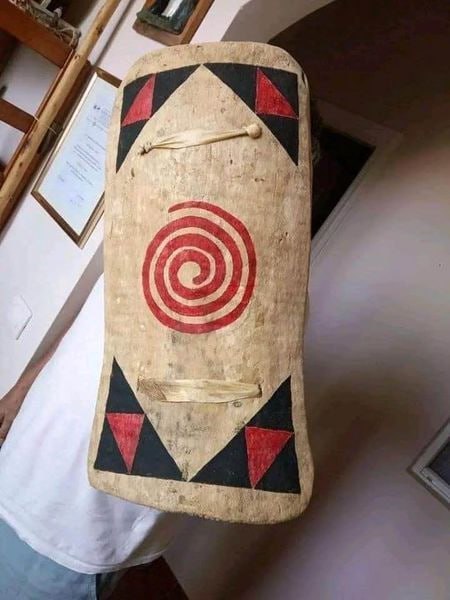
EDRA - Origen
¿COMO ERAN LOS ESCUDOS DE LOS ANTIGUOS CANARIOS?
Las fuentes etnohistóricas mencionan la utilización de 𝐭𝐚𝐫𝐡𝐚𝐬, broqueles, escudos o rodelas fabricadas con madera de dragos:
«[…] de este arbol [drago] hacian rodelas pa. su defenza i eran 𝐠𝐫𝐚𝐧𝐝𝐞𝐬 𝐢 𝐩𝐢𝐧𝐭𝐚𝐝𝐚𝐬 𝐝𝐞 𝐝𝐢𝐮𝐢𝐬𝐚𝐬».
[Pedro Gómez Escudero ca. 1484]
«[…] tenían espadas de palo a modo de montantes y unas adargas 𝐜𝐮𝐚𝐝𝐫𝐚𝐝𝐚𝐬 𝐲 𝐨𝐭𝐫𝐚𝐬 𝐫𝐞𝐝𝐨𝐧𝐝𝐚𝐬 𝐢 𝐩𝐢𝐧𝐭𝐚𝐝𝐚𝐬 𝐝𝐞 𝐚𝐥𝐦𝐚𝐠𝐫𝐚 𝐲 𝐜𝐚𝐫𝐛𝐨𝐧 𝐜𝐮𝐚𝐫𝐭𝐞𝐚𝐝𝐨𝐬 𝐲 𝐚𝐥𝐱𝐞𝐝𝐫𝐞𝐬𝐞𝐬 […]».
[Pedro Gómez Escudero ca. 1484]
«...armas...traían rodelas 𝐦𝐮𝐢 𝐠𝐫𝐚𝐧𝐝𝐞𝐬 𝐝𝐞 𝐚𝐥𝐭𝐮𝐫𝐚 𝐝𝐞 𝐮𝐧 𝐡𝐨𝐦𝐛𝐫𝐞, eran de una madera ligera estoposa de un árbol llamado Drago. La spada llamaban majido i el broquel tarja; ...traían en las rodelas sus diuisas pintadas a su modo de blanco i colorado de almagra [...]».
[Cedeño (ca. 1490) 1934: 12r].
«[…] que sería conocído por la diuisa dela tarja 𝐛𝐥𝐚𝐧𝐜𝐚 𝐢 𝐜𝐨𝐥𝐨𝐫𝐚𝐝𝐚 𝐝𝐞 𝐪𝐮𝐚𝐫𝐭𝐞𝐚𝐝𝐨».
[Antonio Cedeño (ca. 1490) 1934: 12v].
«[…] tenian hechas rodelas de un arbol estoposo qe. llamaban drago i a estas rodelas llaman tarjas trai[a]nlas pintadas de 𝐛𝐥𝐜𝐨‧ 𝐢 𝐜𝐨𝐥𝐨𝐫𝐚𝐝𝐨 𝐜𝐨𝐧 𝐬𝐮𝐬 𝐝𝐞𝐛𝐢𝐬𝐚𝐬 𝐜𝐚𝐝𝐚 𝐯𝐧𝐨 𝐚 𝐬𝐮 𝐦𝐨𝐝𝐨 jugauan dellas diestramte […]».
[Antonio Cedeño ca. 1490]
+ INFO
Proyecto Tarha
https://proyectotarha.org/.../01/de-tarjas-y-pintaderas-22/
Diccionario Ínsuloamaziq
https://imeslan.com/2017/10/15/tarha/
📷 1 y 2. Pepe Tejero. Recreación realizada por Isidro Cedrés (Tenerife).
https://www.facebook.com/pepe.tejero.1
📷 3. Guerreros Tuareg.
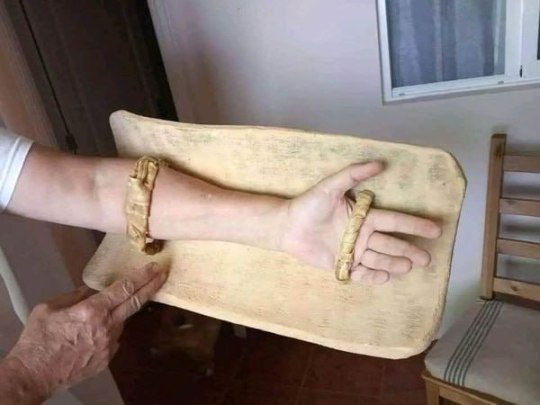

https://www.facebook.com/permalink.php?story_fbid=pfbid0q3cJgfohCoDoBW5HDSze7MNpD2UqGbMoDWJhSXF3YYdeYtW19GPVHoU7pzKupCsQl&id=100046478508495&__cft__[0]=AZX584gug8jCEgc4qApC7DSgn0KhCpB_bWKIzx_2MKUj-j5xnvJPvcqx35SC7dyt618d1lYrc1SM99qYBADe9cXRNwKJvMxJShLNjq62UuSAp1OPesEaV5acps-p_zqsJXFlIPrwy0VaLOcw6Ub3zwrPTK4BBGJq7iXjpukiAwz6YCRFmqHSjHvQ1It3JY4J5p15GdOYe0dBAoJPiN4911kj&__tn__=%2CO%2CP-y-R
#edra#tarhas#escudos#drago#proyecto tarhas#felipe tejero#shields#aborigenous#indigenous#culture#history#genocide#native#unesco#cour penal international#international criminal court#corte penal internacional#united nations#aborigenes#indigenas#cultura#historia#genocidio#nativos#naciones unidas#canarias la colonia mas antigua del mundo#canarias tiene identidad cultural propia#descolonizacion de canarias#canarias#onu
9 notes
·
View notes
Text
Insight into the Labor of Peace

Over the past month, my understanding of the International Criminal Court and global community has developed, especially by learning from professionals working within the ICC. My ignorance and incorrect assumptions about the role and functions of the ICC left me open to a flood of information on the court, along with a look into the individuals employed at each level. When imagining the Court in anticipation, I pictured justices in flowing black robes, pristine court rooms, and a small lot of spectators watching in silence. These ideas, to my interest, do reflect what occurs on the day of trial. What I failed to understand was how many people are working everyday to allow the ICC to function. Although the ICC building is full of legal professionals, I realized how little I acknowledged a vast array of professionals working around the world on behalf of international criminal legal institutions.
According to the ICC website, the Court employs over 900 staff members from approximately 100 States (1). While English and French are the two working languages, the court also includes Arabic, Chinese, Russian, and Spanish as official languages (1). From the perspective of the international community, The Hague is the epicenter for international criminal justice. This experience, especially my time spent in the ICC building allowed me to realize how The Hague’s role is much greater than I ever knew in the US. Even outside of The Hague, the ICC operates six field offices in the following nations: DRC, Uganda, CAR, Kenya, and Côte d'Ivoire (1). The cooperation between these advocates for international justice over many years is what ultimately produces positive results.
This cooperation of the thoughtful, concerned individuals in the ICC building alongside people gathering evidence and taking testimony from victims leads to a court that can change the world. The court’s first verdict in 2012, against Thomas Lubanga of the DRC, proved the Court’s ability to reach men of power. Lubanga was convicted of war crimes relating to conscripting children for his militia and was sentenced to 14 years of imprisonment. (2) The highest profile person to be charged by the ICC to date is the Ivory Coast’s former President Laurent Gbagbo. Gbagbo’s 2011 conviction included murder, rape, and persecution (2). While spending time touring the ICC building, I reflected on how the actions of many individuals reach the top, forcing an end to impunity.
The international cooperation required for global justice does not end in the ICC, The Hague, or even within the ranks of employees and advocates. As explained during the Asia-Pacific Forum near the anniversary of the Rome Statute, students of justice and ethics advocate for these ideals domestically. In the United States, the American Bar Association showed an increase from 2014 in awareness of the ICC, caused by millennials. Today, awareness of the ICC is “highest among millennials (age 18-34), where 60% have heard at least a little bit about it” (3). If this upward trend in public opinion exists among other nations, the ideals of peace and justice may also rise. By spending time around the professionals working in the ICC, my insight leads to a more realistic outlook. Progress in peace is built upon the labor of countless individuals--of today and of the past. By recognizing the work it takes to make a change, I am more prepared to face international law with a realistic approach. This insight will be valuable in internship, advocacy, and education and serve as a reminder of the labor of peace.
(1) "International Criminal Court: About." Cour Penale Internationale. Accessed July 19, 2018. https://www.icc-cpi.int/about.
(2) "What Does the International Criminal Court Do?" BBC News. June 25, 2015. Accessed July 19, 2018. https://www.bbc.com/news/world-11809908.
(3) ABA-ICC Project Staff. "July 2017 Ipsos Poll Results." International Criminal Justice Today. July 17, 2017. Accessed July 19, 2018. https://www.international-criminal-justice-today.org/polling-data/2017/07/17/july-2017-ipsos-polling-results/.
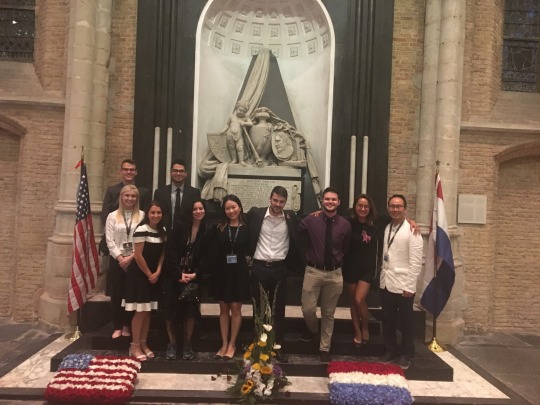
0 notes
Text
Developing an Understanding of the ICC
Over the past month, my understanding of the International Criminal Court and global community has developed, especially by learning from professionals working within the ICC. My ignorance and incorrect assumptions about the role and functions of the ICC left me open to a flood of information on the court, along with a look into the individuals employed at each level. When imagining the Court in anticipation, I pictured justices in flowing black robes, pristine court rooms, and a small lot of spectators watching in silence. These ideas, to my interest, do reflect what occurs on the day of trial. What I failed to understand was how many people are working everyday to allow the ICC to function. Although the ICC building is full of legal professionals, I realized how little I acknowledged a vast array of professionals working around the world on behalf of international criminal legal institutions.
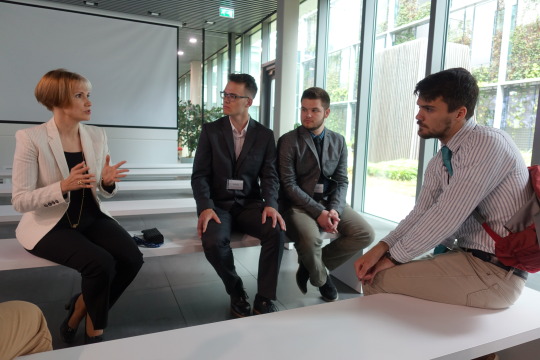
According to the ICC website, the Court employs over 900 staff members from approximately 100 States (1). While English and French are the two working languages, the court also includes Arabic, Chinese, Russian, and Spanish as official languages (1). From the perspective of the international community, The Hague is the epicenter for international criminal justice. This experience, especially my time spent in the ICC building allowed me to realize how The Hague’s role is much greater than I ever knew in the US. Even outside of The Hague, the ICC operates six field offices in the following nations: DRC, Uganda, CAR, Kenya, and Côte d'Ivoire (1). The cooperation between these advocates for international justice over many years is what ultimately produces positive results.
This cooperation of the thoughtful, concerned individuals in the ICC building alongside people gathering evidence and taking testimony from victims leads to a court that can change the world. The court’s first verdict in 2012, against Thomas Lubanga of the DRC, proved the Court’s ability to reach men of power. Lubanga was convicted of war crimes relating to conscripting children for his militia and was sentenced to 14 years of imprisonment. (2) The highest profile person to be charged by the ICC to date is the Ivory Coast’s former President Laurent Gbagbo. Gbagbo’s 2011 conviction included murder, rape, and persecution (2). While spending time touring the ICC building, I reflected on how the actions of many individuals reach the top, forcing an end to impunity.
The international cooperation required for global justice does not end in the ICC, The Hague, or even within the ranks of employees and advocates. As explained during the Asia-Pacific Forum near the anniversary of the Rome Statute, students of justice and ethics advocate for these ideals domestically. In the United States, the American Bar Association showed an increase from 2014 in awareness of the ICC, caused by millennials. Today, awareness of the ICC is “highest among millennials (age 18-34), where 60% have heard at least a little bit about it” (3). If this upward trend in public opinion exists among other nations, the ideals of peace and justice may also rise. By spending time around the professionals working in the ICC, my insight leads to a more realistic outlook. Progress in peace is built upon the labor of countless individuals--of today and of the past. By recognizing the work it takes to make a change, I am more prepared to face international law with a realistic approach. This insight will be valuable in internship, advocacy, and education and serve as a reminder of the labor of peace.
(1) "International Criminal Court: About." Cour Penale Internationale. Accessed July 19, 2018. https://www.icc-cpi.int/about.
(2) "What Does the International Criminal Court Do?" BBC News. June 25, 2015. Accessed July 19, 2018. https://www.bbc.com/news/world-11809908.
(3) ABA-ICC Project Staff. "July 2017 Ipsos Poll Results." International Criminal Justice Today. July 17, 2017. Accessed July 19, 2018. https://www.international-criminal-justice-today.org/polling-data/2017/07/17/july-2017-ipsos-polling-results/.
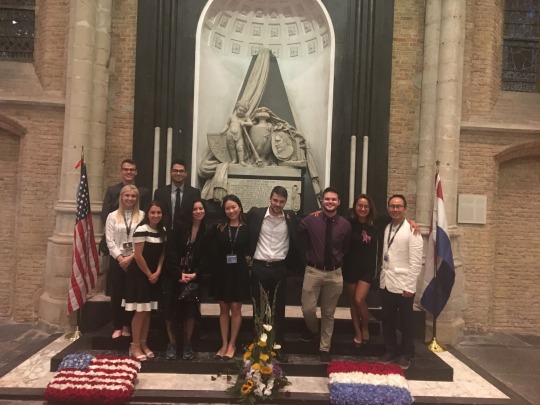
0 notes
Text
TROPAS DE OCUPACION ESPAÑOLAS
Las chapuzas de las tropas de ocupación españolas en canarias son como estas imágenes del sur de Tenerife en una redada anti drogas, basta ya de colonialismo despiadado español.
Canarias Animal
San Isidro - Tenerife Sur
🔴ACTUALIZAMOS:
2 perritos YA ESTAN ESTABILIZADOS 🙏 EN LA CLINICA VETERINARIA por causa de los disparos de la Policia.
Han pagado por un mal dueño y una mala ejecuciòn.
Supuestamente, fue una redada antidroga. El dueño de los perros los solto, para que según la policia los atacara, no vemos indicios de agresividad en los perros, si quieren atacar, atacan y punto.
Esperamos que tomen las medidas oportunas, en este caso.
Pero pensamos, que como siempre, quedara en nada.
Desconocemos cuáles han sido los hechos con seguridad.
Pero nos queda claro, que la Policia, necesitan de forma urgente formación específica en el trato y manejo con los animales.
Por otra parte no puedes llevar los perros sueltos. Y no puedes decirles que ataquen. Según nos comentan.
Nos han enviado muchos mensajes a pagina, quedaran en el anonimato. No queremos meter mas fuego a este tema.
Pero sinceramente, muy impotentes viendo esto.
Alguien puede explicarnos esto???
Disparos de policia.
Vamos,¿ todo por estar sueltos?? ¿¿Perros super agresivos??. Un perro de estos , cuando ataca se lanza. No se quedan frenando. Estan supuestamente, defendiendo a su dueño. ¿¿No sabian reducirlos?? ¿¿No tienen dardos tranquilizantes???
Falta una parte de ver y entender, esta situaciòn. No podemos opinar sin saber toda la historia.
¿¿ALGUIEN PUEDE INFORMAR ??
NO ENTENDEMOS NADA.
No puedes llevar, los perros sueltos. Eso es entendible.
Pero repetimos, NO ENTENDEMOS NADA😔
https://www.facebook.com/permalink.php?story_fbid=pfbid0u42AumS284PwRaHsyXTVEfXWZnyCij7m7oHAHCy8mis7fXovdJducbGRduX5fWBEl&id=100064534428851&__cft__[0]=AZXmc2HiKQQAJIhRQFZ0HJXK_-dOHPOu4ZEaEJHE1EgmbWBz33_wQnmOdsy0skuu6TzAeXfGK4bO1IFY00qqJGMJ90nHjAmi1-CxEm5_Vzk1ZdjHHN5ZzhhJoARJN6o0V6z1auyEZMaTYOHSA0LaK3X_lTjRDUKFfgVAIBII-D1Okvw_jAXNKMG6s-pIP1-JFxJrBWHLe0yz96amU5J5hTP1&__tn__=%2CO%2CP-y-R
Salvar Canarias
https://www.change.org/.../justicia-para-dana-chicote-y...
Vamos a organizarnos en protesta!!!! ??? Nuestro apoyo a la defensa por los derechos de los animales que se vieron envueltos en una actuación nefasta sin un protocolo de actuación para proteger a estos perros y su integridad ,porfavor valoremos que los policías debieron actuar con prevención 6 haber detenido a este hombre mientras estaba solo!!! por favor
https://www.facebook.com/lucha.ecologica.9/posts/pfbid0RChFHLncT2MtF8fxxwkNqdbz2zpBuToVCQRB3Z5nbNt7HdoiZWmNzK4be6vVBQ3Ll?__cft__[0]=AZXmc2HiKQQAJIhRQFZ0HJXK_-dOHPOu4ZEaEJHE1EgmbWBz33_wQnmOdsy0skuu6TzAeXfGK4bO1IFY00qqJGMJ90nHjAmi1-CxEm5_Vzk1ZdjHHN5ZzhhJoARJN6o0V6z1auyEZMaTYOHSA0LaK3X_lTjRDUKFfgVAIBII-D1Okvw_jAXNKMG6s-pIP1-JFxJrBWHLe0yz96amU5J5hTP1&__tn__=%2CO%2CP-R
#Spanish occupation troops#animals#dogs#tenerife#aborigenous#indigenous#culture#history#genocide#native#unesco#united nations#police#cour penal international#corte penal internacional#tropas de ocupacion españolas#animales#perros#aborigines#indigenas#cultura#historia#genocidio#nativos#naciones unidas#policias#canarias tiene identidad cultural propia#canarias la colonia mas antigua del mundo#descolonizacion de canarias#canarias
8 notes
·
View notes
Text
GUACIMARA
G Ancor Kanarii
DICEN que cada día se levantaba al amanecer para contemplar Echeyde y su manto desigual, ora de nieve, ora de ceniza. Y que le rezaba a aquel dios tan alto y tan bello, arrodillada en la tierra que le había dado el alma.
Guacimara encarna la épica y el sacrificio. Princesa guanche de Anaga turbó su alma cuando vio aparecer en lontananza las velas enemigas del español airado.
Cuentan que combatió hasta la arena de Añaza y que venció con su lanza a los guerreros que venían a arrebatarnos la dignidad y los rebaños. Su gesta fue ponderada en el maravilloso Poema de Viana, mitad crónica de guerra, mitad canto de amor.
"Y cuentan que era tan bella/y cuentan que era tan brava/y cuentan que tal hechizo escondía en la mirada/que más de un aventurero quedó en las playas de Añaza/cuando no herido de cuerpo/herido de amor su alma".
Hija de Beneharo, desposada con Ruymán, acaso la princesa guanche más bella de la historia, Guacimara manejaba con destreza las armas de su pueblo. De niña conoció todos los barrancos del reino y debido a su belleza despertó pasiones entre los varones de su entorno, que la amaban en silencio. Hasta que llegó Ruymán, heredero de Taoro, que la hizo suya en medio de amores de ida y vuelta, de oposiciones familiares y de presiones de conveniencia.
Arrogante y libre, Guacimara pertenece a nuestra historia más entrañable. Antes de caer en manos enemigas se lanzó al océano desde un acantilado y su sacrificio aumentó su leyenda. Su cuerpo acaso fue convertido en sirena y quizá aún nade, todavía más libre, por entre las olas del mar de las islas. Podemos fabricar nuestra mitología a partir de historias y leyendas tan bellas como la de la princesa indomable y el noble guerrero.
El español invasor quiso acabar con el pueblo guanche, pero la raza queda. Quedan los sentimientos, queda la razón y queda el orgullo, indiscutible, de un pueblo como el nuestro, que tiene el deber de reivindicarse ante la historia y ante nosotros mismos. Por eso queremos ser libres. Por eso queremos ser nosotros mismos.
Guacimara, princesa guanche, heroína de la defensa de Tenerife, realizada por los primitivos canarios, nuestros antepasados. Los que fueron traicionados en su
nobleza por los asesinos a sueldo enviados por reyes lejanos. Pero queda la raza. Y su sacrificio. Y quizá su alma.
Foto: David Roman.

https://www.facebook.com/G.ANCOR/posts/pfbid027gG88gxY1x39aN55dWfz3bB5NT4gRk4dhG7NJRh3c5xjHtUAdY8NDvtLCjscUerHl?__cft__[0]=AZWRrlfRYwoiz7Y33CM-My_BdVLwN0G4Cm-xEE2-i858MN16jmQxmdfKdMNDqsIGvOucZDmGb6oLWl0Jv0koeS7r7YwM23U9c_3YFQ0nWBupBSMRSKAlyjOPNH921lE4CLh6HEORzxCd6LAzYSbGKv3q1cKTta4au_Nw697y7jwxiA&__tn__=%2CO%2CP-R
#guacimara#achinet#guanche#princesa#guayarmina#aboriginal#aborigenous#indigenous#culture#history#native#genocide#unesco#canary islands#united nations#international criminal court#cour penal international#corte penal internacional#aborigenes#indigenas#cultura#historia#genocidio#nativos#naciones unidas#islas canarias#canarias la colonia mas antigua del mundo#canarias tiene identidad cultural propia#descolonizacion de canarias#canarias
3 notes
·
View notes
Text
TEXAS HISTORICAL COMMISSION
Texas Historical Commission
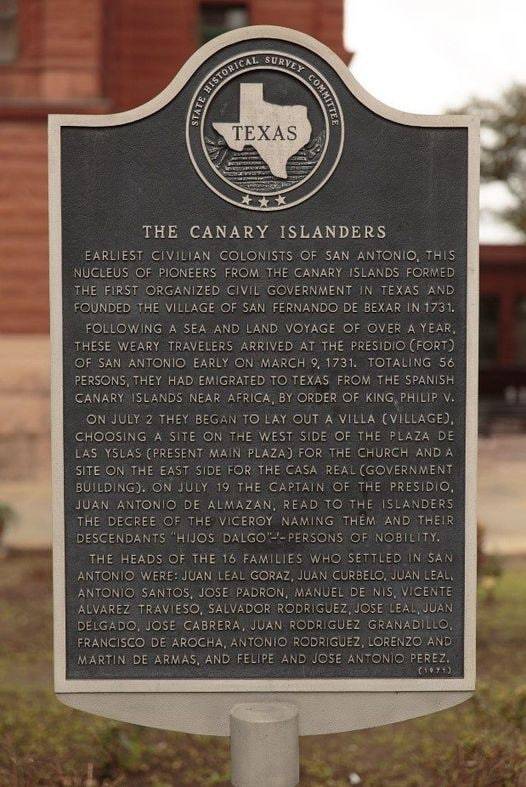
We honor the intrepid adventurers from 16 families, who arrived at Presidio San Antonio de Bexar, nearly one year after they had set sail from Tenerife in the Canary Islands off the coast of Africa. Aboard the ship España, they reached Cuba after a three-month journey across the Atlantic Ocean.
Some went on to Veracruz in New Spain, and by the fall were in Cuautitlán near Mexico City. After several more weeks on foot, 56 men, women, and children arrived in San Antonio to fulfill officials’ plans to increase the civilian population, joining a largely military and religious community established in 1718.
On this day in 1731, they began to lay out a village, choosing a site on the west side of the main plaza for the church. The new settlers founded San Fernando Cathedral and San Antonio de Bexar, recognized as the first regularly organized civil government in the state.
A historical marker was placed in 1971 in Main Plaza between San Fernando Cathedral and the Bexar County Courthouse, at the site where the Canary Islanders’ journey of about 5,000 miles ended.
https://www.facebook.com/TexasHistoricalCommission/posts/pfbid02y3Xy6zineJejAAk2LexEmqAMqRck6ijf4UpBSy4moLpAwDQy44aZshHtN5EymtV7l?__cft__[0]=AZV9r2FbMlaIOq8PmZbwngq2HOcLxGdEy80FjjMCtBl4014-pqGwZ-6xVy7C4N3rT5_Y0V0AEUCHRUEiXG4uQ1AVHSVViivZ0PuwP9czJgwWCrPhT1FxtU8Q_hd_w76jBxfTyDJcRlNMsuuBNpbQ6FGsgyNYMo5VqvG3PWR8AmV-6gyfyFMkGNpmpDSOCMRFB7yjgVOP8L7STN5AYdbdTw1h&__tn__=%2CO%2CP-y-R
#texas historical commission#san antonio texas#islanders#the canary islanders#indigenous#aborigenous#history#culture#genocide#indigenas#aborigenes#cultura#historia#genocidio#unesco#tribunales internacionales de justicia#international criminal court#cour penale internationale#canary islands#canarias tiene identidad cultural propia#descolonizacion de canarias#canarias#cpi#icc#corte penal internacional#canarias la colonia mas antigua del mundo#onu#naciones unidas#islas canarias#united nations
11 notes
·
View notes
Text
THE ISLEÑOS OF LOUISIANA

Siento algo de tristeza o peor mucha pena al ver el desconocimiento de los descendientes de los esclavos canarios obligados a ir a LOUISIANA como españoles, ellos lo creen que son pero en realidad viven engañado por la mentira colonialista española que aún perdura pasados estos siglos.
Canary Islanders of Louisiana:
If you're from Louisiana and you're a Acosta, Albarado, Aleman, Alfonso, Alvarez, Armas, Ascano, Assevedo (Acevedo), Bermudez, Caballero, Cabrera, Campo, Corvo (Carbo), Ceballos, Delgado, Diaz, Dominguez (Domingue), Espino, Estevez, Falcon, Francisco, de Fuentes, Garcia, Gomez, Gonzales, Guerra, Gutierrez, Guzman, Hernandez, Herrera, Hidalgo, Lopez, Martin, Melian, Mendez, Mendoza, Marrero, Mesa, Molero, Monzon, Morales, Nieves, Nunez, Ojeda, Oramas, de Orta (Horta), Pena, del Pino, Perera, Perez, Placencia (Plaisance), Quintana, Quintero, Ramirez, Ramos, Ravelo, Rodriguez (Rodrigue), Romero, Ruiz, Santos, Sanchez, Serpas, Silva, Silverio, Solar, Suarez, Tilano, Toledo, Torres, Truxillo, Vega, Viera, Villavicencio, Ximenez, Zerpa (Serpa), etc., you might be a descendant of an Isleno.
Be sure to visit http://www.canaryislanders.org/ and http://www.losislenos.org/
The Canary Islanders Heritage Society of Louisiana, founded in 1996, exists to document, preserve, and celebrate the heritage of our Spanish ancestors from the Canary Islands who immigrated to Louisiana in the 18th century.
The Los Isleños Heritage and Cultural Society is dedicated to preserving the Spanish language, legends, crafts, customs, folklore, rituals, music and history of our Spanish Isleños heritage by: maintaining an Isleños museum and multi-cultural village; promoting an annual student of Isleños heritage; and promoting annual Museum Days, a three-day event, to give students hands-on knowledge of the early Isleños and their way of life
#canary islanders of louisiana#louisiana#culture#history#genocide#aborigenous#indigenous#genealogy#cultura#historia#genocidio#aborigenes#indigenas#genealogia#unesco#united nations#international criminal court#cour penale internationale#tribunales internacionales de justicia#canarias tiene identidad cultural propia#canarias la colonia mas antigua del mundo#canarias libre#descolonizacion de canarias#canarias#cpi#icc#onu#naciones unidas#islas canarias#corte penal internacional
9 notes
·
View notes